What is Breast Asymmetry
Very few women have breasts that are perfectly symmetrical. In most cases, there is a variation between the shape of the left and right breasts. While variations are considered normal, some women feel uncomfortable with asymmetric breasts and want to explore the option of correcting them. Breast asymmetry can be observed in most teenagers, and around 25% of adult women also experience breast asymmetry to some extent.
How is Breast Asymmetry Caused
Breast asymmetry is caused by genetic characteristics or as a result of developmental difficulties. Female hormones control the growth of breasts. The growth stage begins after the first menstruation cycle and usually continues for two to four years. During the growth period, it is natural to have breasts of different sizes or shapes. Gradually, they will grow to be more symmetrical, though if this does not occur, the breasts will remain unchanged until pregnancy or menopause. This asymmetry can be corrected with a selection of procedures, including breast reduction, breast augmentation, or a combination of both.
Am I a good candidate for breast asymmetry surgery?
Good candidates for breast asymmetry surgery in Boston and Worcester, Massachusetts are healthy individuals who are unhappy with any asymmetry that has occurred in their breasts. The procedure that is best suited for your condition will be suggested by Dr. Hall after he examines your physical anatomy, and will vary depending on factors such as breast size, shape, and your preferred choice for balancing the breasts.
Breast Asymmetry & Breast Reduction – Patient 208
A woman in her mid 20’s with back pain, shoulder pain, grooving and irritation of the shoulders from her bra straps, difficulty exercising because of the size of her breasts and a rash in the warmer months. She was wearing a 34 DDD Bra. She is shown before and again, 4 ½ months after bilateral breast reduction with the removal of 743 grams from her left breast and 561 grams from her right breast to bring her down to a C cup. Her symptoms have resolved and she is thrilled with the new shape and size of her breasts.
Breast Asymmetry & Breast Reduction – Patient 207
A nursing student in her early 20’s who is bothered by breast asymmetry and macromastia. She is a D cup on her left and a triple D cup on her right. In addition to having problems in a bathing suit and in clothing from the difference in size of her breasts, she also has problems with back pain, shoulder pain, difficulty exercising as well as a rash under her breast in the warmer months.
She is ‘ 4” and 156 lbs and is shown before and again, 9 months after bilateral breast reduction with the removal of 146 grams of tissue from her left breast and 536 grams from her right breast to bring her down to a full C cup to match her frame.
Her symptoms have resolved and she is thrilled to have breasts that match in her clothing.
Breast Reduction & Asymmetry Patient – 175
An 18 yo woman of color with severe macromastia and breast asymmetry. She describes herself as a 38G cup and has problems with grooving and irritation of the shoulders, back pain, shoulder pain, difficulty exercising and intertrigo. She is shown before and again, 5 months after bilateral breast reduction with an inferior pedicle Inverted T scar technique with the removal of 1538 gms from her right breast and 961 gms from her left breast to reduce her to a full Cup. Scars will typically fade and improve over the next two years. She is thrilled with her result. She no longer has symptoms due to the size of her breast and is able to exercise now. She is confident now, and showed me photos of her being able to wear beautiful dresses now from a recent trip to a bridal shop that she could never have been comfortable in before.
Breast Asymmetry- Patient 122
A 17 year old woman with severe breast asymmetry. She is larger than a DD on her right and a full C cup on her left. She has had problems with right shoulder and back pain due to the size of her breasts. She had first developed breasts at the age of 13 and has not had any changes in size over the past year.
She is shown before and again, 7 ½ month after a J breast lift on her left side and a short T scar technique on her right. Gortex Round block sutures were used to prevent spreading of the areola. 40 gms of tissue were removed from her left and 252 gms from her right. Her symptoms have resolved and she is thrilled to have breast which match. Scars typically get thicker and redder for 6 weeks and then fade and improve over the next 2 years or longer. She is using topical silicone to help with the scar maturation.
Breast Asymmetry- Patient 121
A mother of 3 in her late 30’s who feels like her breasts are too small to balance her frame, and is also bothered by breast asymmetry in a bathing suit and in T shirts when she is not able to wear a padded bra to camouflage. She has selected the ideal structured saline implants because she didn’t want to worry about silent rupture but wanted an implant that feels more natural than the traditional saline.
She is 5’6” and 138 lbs and is shown before and again, 9 months after bilateral partial sub-pectoral breast augmentation through and inframammary incision with a 300 cc Ideal structured saline implant on her left filled to 320cc which is above the “high” but below the “100%” fill volume, and a 440 cc Ideal structured saline implant on her right filled to the “high” of 440 cc. Tattoos have been blurred for her privacy.
How is breast asymmetry surgery performed?
Breast surgery is performed based on the procedure(s) that are chosen based on Dr. Hall’s examination of your breasts and what your individual goals include. For more information on breast asymmetry surgery options, visit our breast reduction and breast augmentation pages.
What should I expect during recovery?
Depending on the breast surgery performed, recovery time will vary. After breast augmentation surgery, patients should take one to two weeks to fully recover. After breast reduction surgery, patients can typically return to non-physical work in just one week, but should wait six weeks before returning to physical activities, including exercise. Dr. Hall will give you specific instructions for breast surgery recovery, and it is imperative that you follow them for a quick and safe recovery.

“I saw 3 surgeons before meeting with Dr. Hall and by far he and his staff was the most compassionate, thorough, professional and helpful. Can’t say how pleased and comfortable he and his staff made me feel.”
Real Patient Ratings™ Review
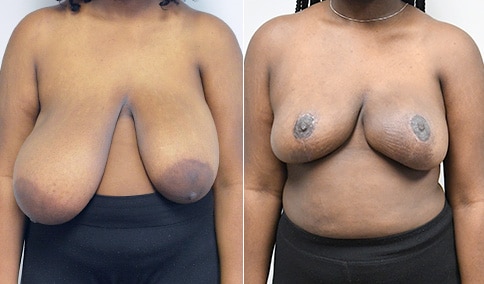
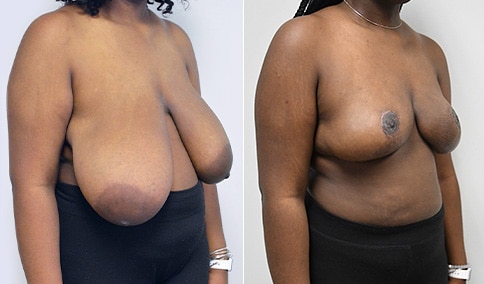
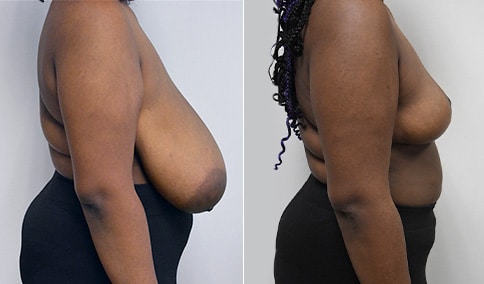
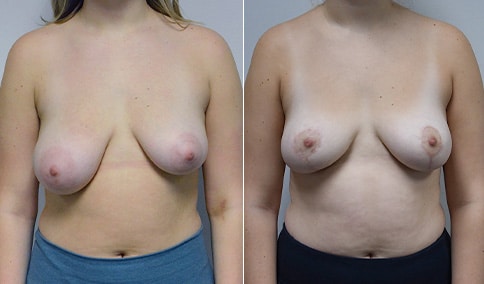
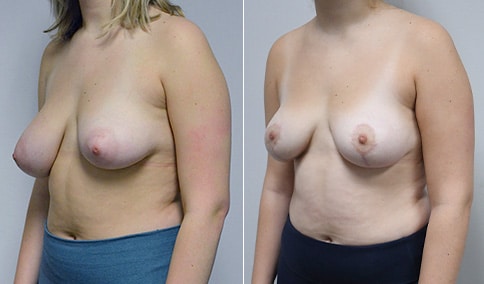
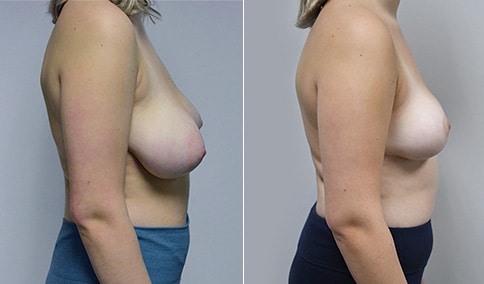
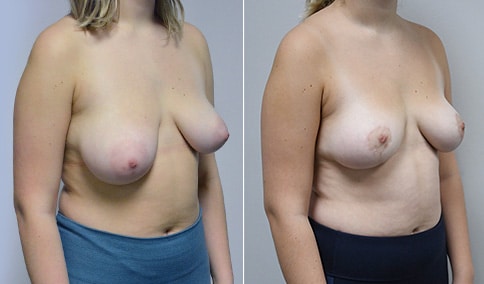
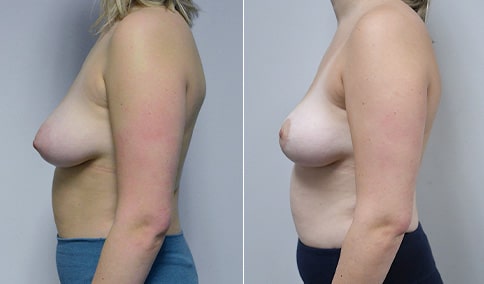
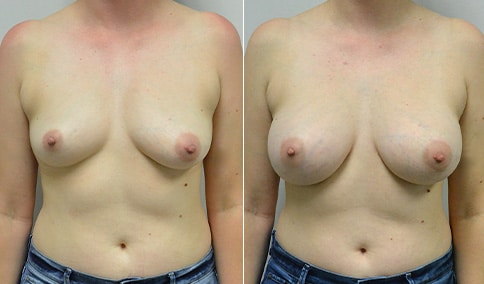
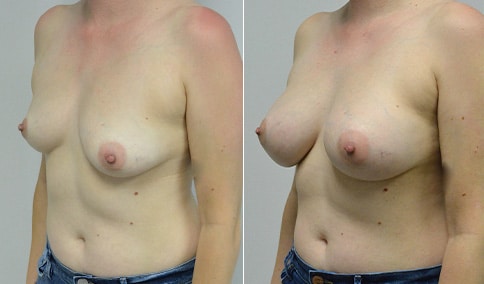
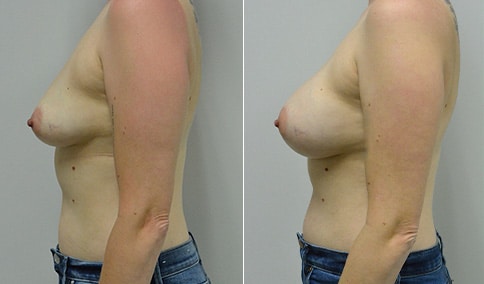







Cosmetic & Plastic Surgery Specialist
"I treat my patients like I would treat
- Jonathan D. Hall, MD, FACSmembers of my own family."
Schedule Consultation